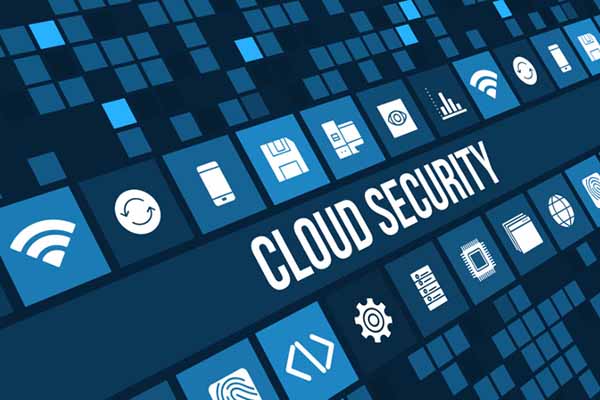Cloud computing has already defined its viability and magnetic acceptance across enterprises and businesses. Traditional IT has long gone and has opted the way toward cloud and its newer approaches. With cloud computing came the evolution of Cloud Security. Though it is said that security has kept the industry on toe but with Cloud Security’s entrance the words in the Enterprises have quite faded away. Gone are those early days when cloud was on the radar of cyberattacks and cybersecurity companies were quite jittery about its future.
Though vulnerabilities are always prone to any form of security and Cloud Security goes no into other hands but the potential Cloud Security has derived and with the gamut of Data in the world, Cloud Security seems to be still a viable preference for businesses. Cloud Security has still offer great security for businesses and enterprises. Also, it is worth mention from consumer electronics to critical data storage all data today is somewhat relying on Cloud Security.
The question may arise actually what all can Cloud Security Protect?
Then the answer becomes quite versatile as the full potential of Cloud Security can vary from individual client’s need and also shape itself to the according:
- Physical networks — routers, electrical power, cabling, climate controls, etc.
- Data storage — hard drives, etc.
- Data servers — core network computing hardware and software
- Computer virtualization frameworks — virtual machine software, host machines, and guest machines
- Operating systems (OS) — software that houses
- Middleware — application programming interface (API) management,
- Runtime environments — execution and upkeep of a running program
- Data — all the information stored, modified, and accessed
- Applications — traditional software services (email, tax software, productivity suites, etc.)
- End-user hardware — computers, mobile devices, Internet of Things (IoT) devices, etc.
No More On-Site Servers!
Earlier IT infrastructure for even an access management needed to have onsite servers and heavy IT infrastructure. With cloud-based security, today businesses are saving infrastructure spaces and evading bulky equipment’s. The latest trend has helped many companies to lessen their TCO and evaluate their expenses through their benefits with cloud-based approaches.
Why Cloud Security is a Viable Cybersecurity Option?
Traditional security has its limitations and as it operates around traditional perimeter security model. Whereas cloud adopts data-centric approach which can restrict unauthorized access, such as data encryption, authorization process, and multi-factor authentication.
Cloud computing has the ability to integrate with third parties as well as incorporate automated AI-based network scanning technologies. This can reduce costs and security threats that can be caused due to human errors. Cloud operates with a zero trust approach. With traditional IT infrastructures, if attackers have access to the network, they can threaten other resources. But with a zero trust approach, attackers need to verify their identity in every step, making it more difficult to access important data.
Data Storage and Backup
Traditional data storage comprises redundancy and backups housed onsite or across multiple sites. This not only requires manual efforts but also is expensive, along with the need for stringent backup schedule, buying additional storage hardware to mitigate inherent risks. The argument on greater control over data storage & backups regarding on-premises deployment continues among organizations. However, the scenario is not what it seems considering heavy dependency of on-premises approach on human responsibility and proximity.
Cloud-based data storage and backups is automated and eliminates the dependency on the IT team and is less vulnerable to physical damage. Reputed cloud providers have geographically-spread, highly secure and high tech data centers to ensure prevention of data compromisation. Redundancy and data storage in the cloud necessitates shared responsibility.
Mitigating Security Threats
With cloud computing and the right cloud hosting partner, organizations don’t need to depend solely on their IT teams or make investments in latest hardware upgrades. Furthermore, the dependency on traditional security is reduced. Automated processes such as AI-based network scanning and emails along with updates have improved data security in cloud computing. This further rids the issues related to traditional security measures, such as missed maintenance headlines, human errors, and outdated equipment.
It is clear that neither tradition nor cloud security is completely safe from data breaches. However, cloud security plugs the security gaps more reliably through automation, compared to the traditional security. As security threats evolve faster every day, organizations cannot solely depend upon manual security practices. With cloud security, the CPA of organizations gets automated along with AI-driven security defences. This frees the IT teams to focus on bigger picture strategies and innovation.
Cloud Security VS Cyber Security
Many users will use the cloud to add more space to their devices. But, many people still wonder about the security of the photographs they have taken over the years.
With cyber security, things are done differently when it comes to safety. It entails users taking action to safeguard their personal data. To maintain cyber security, follow these steps:
1. Checking out for debatable email links and never clicking on them.
People’s personal email accounts are frequently spammed with emails that appear to be from a well-known company. These links could take you to a virus or prompt you for personal information when you click on them.
2. Please make use of complex passwords and update them frequently.
If malware has access to your computer, it can steal your passwords. By changing your password frequently, you can keep hackers from gaining access to your data.
3. Incorporating a second factor of authentication
It can be difficult to enter a code each time you log in to an account, but enabling two-factor authorization increases security. Users will receive a text message if someone else tries to log into my account, making it more challenging to get into.
Cloud Security VS Cyber Security: Personal Data Security
Many users will use the cloud to add more space to their devices. But, many people still wonder about the security of the photographs they have taken over the years.
With cyber security, things are done differently when it comes to safety. It entails users taking action to safeguard their personal data. To maintain cyber security, follow these steps:
1. Checking out for debatable email links and never clicking on them.
People’s personal email accounts are frequently spammed with emails that appear to be from a well-known company. These links could take you to a virus or prompt you for personal information when you click on them.
2. Please make use of complex passwords and update them frequently.
If malware has access to your computer, it can steal your passwords. By changing your password frequently, you can keep hackers from gaining access to your data.
3. Incorporating a second factor of authentication
It can be difficult to enter a code each time you log in to an account, but enabling two-factor authorization increases security. Users will receive a text message if someone else tries to log into my account, making it more challenging to get into.

Cloud Security Benefits
The following are some of the reasons why cloud security is beneficial for protecting data:
- Protect your businesses from threats
- Minimizing the chance of data and information being lost
- Ensuring that no data is lost
- Low cost of building infrastructure
- Instead of being responsible for security, you’ve delegated it to a third-party vendor.
Indian Government on Cloud Security
Background The Government of India has paved the way for mass adoption of Cloud services by the Government and Public sector organizations by empaneling the CSPs with Ministry of Electronics & Information Technology (MeitY). The CSPs are empaneled to offer Infrastructure as a Service (IaaS), Platform as a Service (PaaS) and Software as a Service (SaaS) under the three Cloud Deployment models namely, Public Cloud (PC), Virtual Private Cloud (VPC) and Government Community Cloud (GCC). With time, the Government Departments have started evaluating, planning, and adopting Cloud Services from the empaneled CSPs. As the adoption of technology within the Government Departments is evolving, it is intrinsic that the application workloads of the Government Departments are becoming complex in nature. Hence, it has become a prerogative for the Government Departments to imbibe certain practices around security while designing the cloud deployment for the workload.
To facilitate the planning on information security management for the Government Departments, there is comprehensive list of NIST Controls referred from published document “Indian Governmental Cloud Selection Framework” on MeitY Portal. There are certain internationally recognized information security standards highlighted below which department can follow while adoption of cloud platform:

In addition to deciding whether to move applications into the cloud, Departments must also ensure their cloud computing efforts are fully integrated into their entire information security program. This means understanding the process as it fits into the ICT Resilience Lifecycle, which takes into account the prevention aspects, including risk management and information security, and the reaction elements, involving incident management and continuity planning, but also the overall governance process.

















